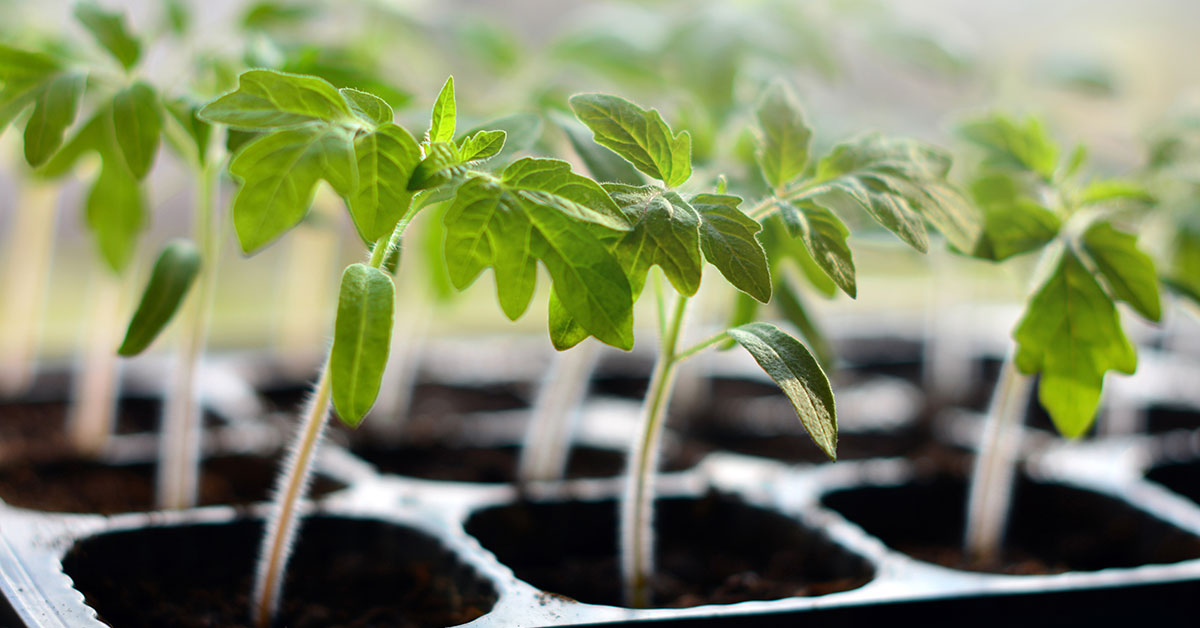Growing tomatoes in Vermont comes with a few challenges, but with proper planning and attention, this can be done very easily. The obstacles in Vermont come in the form of a short growing season, sporadic drought, humidity, and excessive rainfall. Non of these issues are insurmountable, especially once they are understood. We have the full breakdown below.
Tomatoes in Vermont’s Climate
Vermont has a humid continental climate, with long, cold winters and short, cool summers. The state receives moderate to high amounts of precipitation throughout the year, with occasional droughts and heavy rainfall events.
The climate in Vermont can pose several challenges for growing tomatoes, including a short growing season, cool temperatures, and unpredictable weather patterns. To overcome these challenges a few tricks and techniques are handy. Choose early-maturing tomato varieties, start tomato seeds indoors pre-frost, and use season-extending techniques such as row covers, greenhouses, and high tunnels. Cool temperatures and high humidity can also increase the risk of fungal diseases such as blight, so it is important to provide proper ventilation and spacing and use organic pest and disease control methods.
Finally, the state’s occasional droughts and heavy rainfall events can pose challenges for tomato growth, making it important to provide consistent and appropriate watering and drainage solutions. Overall, successful tomato growth in Vermont requires careful planning, appropriate organic pest and disease control measures, and the use of season-extending techniques to ensure a successful harvest.
When to Start Tomatoes Indoors in Vermont
If you want to get an early start on cultivating tomatoes, begin growing the seeds indoors 4-6 weeks before the final spring frost in your area, regardless of the tomato variety you’re growing. In Vermont, start sowing tomato seeds indoors from March 19th to April 3rd.
You may want to get them going even earlier than that and plant them in a large pot ahead of producing them outdoors, just to give them even more of a head start. To start tomato seeds indoors:
- Select a planting container. Choose a container at least 6-8 inches deep, with holes in the bottom for drainage.
- Fill with a seed starter potting soil.
- Plant 2-3 tomato seeds ⅛ inch deep in the soil and cover.
- Water the soil until it is moist but not soggy.
- Place the container in a warm, sunny spot indoors and keep the soil moist.
- When the seedlings reach 2-3 inches tall, thin them out so there is only one seedling per container.
Tomato Varieties That do Well in Vermont
Growing early-harvest tomatoes is essential in Vermont, due to the shortened growing season. Some varieties of tomatoes are ready to harvest in under 60 days, which is ideal in the short growing season of Vermont. I recommend one of the following varieties:
- ‘Early Girl’ Tomato – 55 Days to Harvest
- ‘Sun Gold’ Tomato – 55 Days to Harvest
- ‘Sungold’ Tomato – 50 Days to Harvest
- ‘Stupice’ Tomato – 52 Days to Harvest
- ‘Fourth of July’ Tomato – 49 Days to Harvest
- ‘Sweet Million’ Tomato – 45 Days to Harvest
- ‘Oregon Spring’ Tomato – 50 Days to Harvest
- ‘Celebrity’ Tomato – 70 Days to Harvest
- ‘Yellow Pear’ Tomato – 60 Days to Harvest
- ‘Gardener’s Delight Tomato – 52 Days to Harvests
Hardening Off Your Tomatoes
Hardening off tomatoes that you’ve started indoors before planting outdoors is essential to ensure they can thrive in the outdoor environment. When tomatoes are started indoors, they become accustomed to the warm and more stable environment. When planted outdoors, they are exposed to more extreme temperatures, wind, and sun. Hardening off tomatoes helps them slowly adjust to their new environment by exposing them to these elements for an extended period.
The process of hardening off tomatoes begins by slowly introducing them to the outdoors. Start by placing them in a sheltered spot, such as a porch or a partially shaded area, for a few hours each day. Over a week, gradually increase the amount of time they are kept outdoors and the amount of sun they are exposed to. After a week of hardening off, the tomatoes should be ready to move to their final outdoor planting location.
When to Plant Tomatoes in Vermont
It’s generally safe to plant tomatoes outdoors when there is no risk of frost or freezing temperatures. In most climates, this means waiting until at least late spring or early summer. In Vermont, the final freeze date is expected around April 30th to May 15th depending on where you live. Still, be mindful of your weather forecast. If it seems like you’re in for a late freeze, wait to plant your tomatoes!
When to Harvest Tomatoes in Vermont
When tomatoes have turned a deep red (or the ripe color of their particular variety) and have no green spots visible, they are ripe and ready to be picked. If there are still green patches on the tomato, it has not yet ripened and should remain on the vine. The ideal way to pick ripe tomatoes is to cup the tomato in your hand and give it a gentle twist- it should come off the vine with ease. When in doubt, you can leave it on the vine an extra couple of days, or harvest the entire branch of tomatoes and allow it to ripen on the vine on your window sill.




